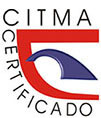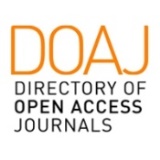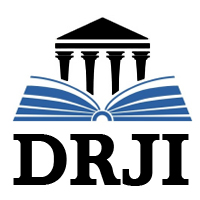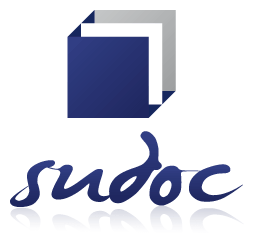Feminist Intralinguistic Translation and Generic Masculine in Olympe de Gouges' Declaration of the Rights of Woman and the Female Citizen
Keywords:
Olympe de Gouges, generic masculine, feminism, inclusive language, translationAbstract
Introduction: Olympe de Gouges published the Declaration of the Rights of Woman and the Female Citizen (1791) in response to the exclusion of women in the Declaration of the Rights of Man and the Citizen (1789), written in specific masculine and later interpreted as generic.
Methods: The semantic and discursive gender of both versions (masculine and feminine) of this foundational text of modern society is analysed as an intralinguistic translation, in order to determine the interpretative intention, marked or not, of the grammatical genders. In parallel, we outline the history of grammatical norms on gender and, in particular, the genericity of masculine.
Results: The texts in this study exemplify the ambiguity of masculine gender and its disservice to women. On the one hand, the masculine gender of the original text was never interpreted as generic, but as excluding women. On the other hand, De Gouges’ feminist translation resorted to specific feminine, albeit with specific instances of generic masculine and inclusive language strategies. The use and absence of linguistic genders reproduce the feelings of men and women of the time about their own current and desired identities, as well as that of others.
Conclusions: Patriarchy has normalised and naturalised its superiority through generic masculine, which allows it to subordinate, exclude and weaken the position of women through language. Its use in legal texts jeopardises the access to rights for the unnamed half of the population. Faced with the current threat of regression of social advances, it is urgent to reject this patriarchal norm and to rewrite legal texts in inclusive language that makes women visible, dignifies and protects them.
Downloads
References
BEAUZÉE, Nicolas (1767). Grammaire générale ou exposition raisonnée des éléments nécessaires du langage. Barbou. https://gallica.bnf.fr/ark:/12148/bpt6k50449f.image
CALVO, Elisa & Elena de la Cova (2024). A qualitative approach to translation studies. Routledge.
COBO, Rosa (2012). Las paradojas de la igualdad en Jean-Jacques Rousseau. Avances del Cesor, IX(9), 109-121. https://biblat.unam.mx/hevila/AvancesdelCESOR/2012/no9/7.pdf
COUTURE-GRONDIN, Élise (2011). “Hacia un lenguaje más igualitario: el aporte de la literatura femenina”. Tinkuy, 15, 49-63. https://dialnet.unirioja.es/descarga/articulo/3415401.pdf
DE GOUGES, Olympe (1791). Déclaration des droits de la femme et de la citoyenne. 1001 nuits. https://www.assemblee-nationale.fr/dyn/histoire-et-patrimoine/revolution-francaise/declaration-des-droits-de-la-femme-et-de-la-citoyenne-olympe-de-gouges
DE LOTBINIÈRE-Harwood, Susanne (1991). Re-belle et infidèle: la traduction comme pratique de réécriture au féminin/The body bilingual: translation as a rewriting in the feminine. Women’s Press.
DE MIGUEL, Elena (2023). Acuerdos y desacuerdos sobre el lenguaje inclusivo. Círculo de Lingüística Aplicada a la Comunicación, 96, 191-204. https://revistas.ucm.es/index.php/CLAC/article/view/91587
DIAMOND, Marie Josephine (1990). Olympe de Gouges and the French Revolution: the construction of gender as critique. Dialectical Anthropology, 15(2/3), 95-105. https://www.jstor.org/stable/29790339
DIAMOND, Marie Josephine (1994). The revolutionary rhetoric of Olympe de Gouges. Feminist Issues, 14, 3-23. https://link.springer.com/content/pdf/10.1007/BF02685649.pdf
DUPLEIX, Scipion (1651). Liberté de la langue françoise dans sa pureté. Denys Bechet. https://gallica.bnf.fr/ark:/12148/bpt6k50579n.image
FRANCIA (1789). Déclaration des droits de l’homme et du citoyen. Asamblea Constituyente. https://www.legifrance.gouv.fr/contenu/menu/droit-national-en-vigueur/constitution/declaration-des-droits-de-l-homme-et-du-citoyen-de-1789
GODARD, Barbara (1990). Theorizing feminine discourse/translation. Tesera, 6, 42-53. https://tessera.journals.yorku.ca/index.php/tessera/article/download/23583/21792/23972
GROUT, Benoît (1986). Olympe de Gouges: Oeuvres. Mercure de France.
HEAP, David (2024). Los masculinos no tan “genéricos”: estudios empíricos sobre interpretaciones en español y en francés. Círculo de Lingüística Aplicada a la Comunicación, 97, 217-230. https://dx.doi.org/10.5209/clac.79361
LIN, Jinlong & Yang Wang. (2023) Back to Marx: reflections on the feminist crisis at the crossroads of neoliberalism and neoconservatism. Humanities and Social Sciences Communications, 10. https://doi.org/10.1057/s41599-023-02341-2
LUCAS, Colin (1995). The French Revolution Research Collection. Micrographix. https://gallica.bnf.fr/ark:/12148/bpt6k426587/f14.item
NICASTRO, Alessia (2024). Redefining Women’s Subjectivity Between Law and Revolution: A Foucauldian Analysis of Olympe de Gouges’ 1791 Declaration. 11th International Conference on Gender and Women's Studies 2024. https://papers.ssrn.com/sol3/papers.cfm?abstract_id=4892775
ONU (1948). La Declaración Universal de los Derechos Humanos. Asamblea General de las Naciones Unidas. https://www.un.org/es/about-us/universal-declaration-of-human-rights
ONU (2014). Open working group proposal for sustainable development goals. Naciones Unidas. http://undocs.org/A/68/970
ONU (2025). Las mujeres que dieron forma a la Declaración Universal de Derechos Humanos. https://www.un.org/es/observances/human-rights-day/women-who-shaped-the-universal-declaration
POULLAIN de la Barre, François (1673). De l’égalité des sexes. Folio. https://gallica.bnf.fr/ark:/12148/bpt6k9617928w.texteImage
RAMÍREZ, Gloria (2015). La declaración de los derechos de la mujer de Olympe de Gouges 1791: ¿Una declaración de segunda clase? Cátedra UNESCO de Derechos Humanos, UNAM. https://catedraunescodh.unam.mx/catedra/catedra/materiales/u1_cuaderno2_trabajo.pdf
RAE, Real Academia Española (1771). Gramática de la lengua castellana, compuesta por la Real Academia Española. Joaquín Ibarra. https://www.cervantesvirtual.com/obra/gramatica-de-la-lengua-castellana--4/
RAE, Real Academia Española (2020). Informe de la Real Academia Española sobre el lenguaje inclusivo y cuestiones conexas. https://www.rae.es/sites/default/files/Informe_lenguaje_inclusivo.pdf
RAE, Real Academia Española (2024). Miembro. Diccionario panhispánico de dudas. https://www.rae.es/dpd/miembro
REINO Unido (1850). An act for shortening the language used in acts of government. Parlamento británico. https://www.legislation.gov.uk/ukpga/Vict/13-14/21/enacted
REINO Unido (1978). Interpretation act 1978. Parlamento británico. https://www.legislation.gov.uk/ukpga/1978/30/contents
SCOTT, Joan W. (1986). Gender: A useful category of historical analysis. The American Historical Review, 91(5), 1053-1075. https://www.jstor.org/stable/1864376
SCOTT, Joan W. (1989). French feminists and the rights of 'Man': Olympe de Gouges's Declarations. History Workshop, 28, 1-21. https://www.jstor.org/stable/4288921
SIMON, Sherry (1996). Gender in translation: cultural identity and the politics of transmission. Routledge.
SOLANGE Ferrero, Sabrina & Francesca Placidi (2024). Retranslation as a means to reinvigorate a feminist agenda: the cases of Beya Durmiente (Dj Beya) and Desertoras. Translation Studies, 17(3), 445-462. https://doi.org/10.1080/14781700.2024.2379016
VIENNOT, Éliane (2014). Non, le masculin ne l’emporte pas sur le féminin ! Petite histoire des résistances de la langue française. iXe.
VON FLOTOW, Luise (1997). Translation and gender: translating in the “era of feminism”. St. Jerome/University of Ottawa.
WOLLSTONECRAFT, Mary (1792). A vindication of rights of woman. With strictures on moral and political subjects. William Gibbons. https://www.gutenberg.org/cache/epub/3420/pg3420-images.html
Published
How to Cite
Issue
Section
License
Copyright (c) 2025 María L. Medel

This work is licensed under a Creative Commons Attribution-NonCommercial 4.0 International License.
Usted es libre de:
Compartir — copiar y redistribuir el material en cualquier medio o formato
Adaptar — remezclar, transformar y construir a partir del material
La licenciante no puede revocar estas libertades en tanto usted siga los términos de la licencia
Bajo los siguientes términos:
Usted es libre de:
Atribución — Usted debe dar crédito de manera adecuada, brindar un enlace a la licencia, e indicar si se han realizado cambios. Puede hacerlo en cualquier forma razonable, pero no de forma tal que sugiera que usted o su uso tienen el apoyo de la licenciante.
NoComercial — Usted no puede hacer uso del material con propósitos comerciales.
No hay restricciones adicionales — No puede aplicar términos legales ni medidas tecnológicas que restrinjan legalmente a otras a hacer cualquier uso permitido por la licencia.



















